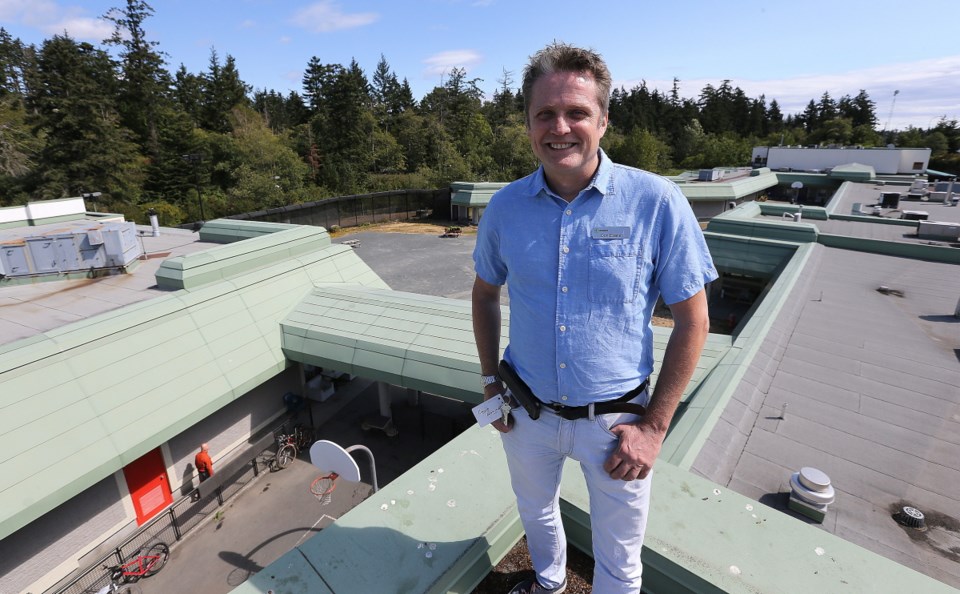A co-ed or female version of the drug recovery program for men proposed to open in the fall at the former youth-custody centre in View Royal is already anticipated, says Don Evans.
The province announced $4.7 million for a therapeutic recovery community this week. The proposed facility still requires rezoning approval from View Royal council.
Evans, executive director of Our Place Society, which will run the program, said his organization hopes to open a similar program for women.
“We are already starting to look at how we might do one for women and there’s opportunities for co-ed as well,” he said.
The therapeutic recovery community model, based on a successful program in Italy, is looked at as a long-term solution to the problem of drug addicts who cycle through the criminal justice system.
Last year, more than 1,400 people died of illicit drug overdoses in B.C. The majority were men using drugs alone.
People in the program must be homeless and dealing with addiction, and have experience with criminal justice system, Evans said.
“The challenge we were trying to address was we were seeing people cycle through jails and the street,” he said.
“They were people who had been in jail and had time to think about their lives and really wanted to live a different life, but they came back on streets and sometimes it was days and hours before they were back in that cycle of addiction and then back in jail down the road.”
About 80 per cent of the region’s homeless people are men and the only two provincial jails here — Nanaimo Correctional Centre and Vancouver Island Regional Correctional Centre — are for men only, Evans said. There are no female provincial jails on the Island. The federal prison, William Head, also houses only men, but is not part of the program.
If the population were proportionately split based on that criteria, it would be 45 men to five women, and that wouldn’t be an ideal environment, Evans said. “If there was a jail for women on the Island then it would be a lot easier to get a high enough number of people for balance [between male and female].”
The men’s program is expected to start with about 12 clients as it builds slowly. Evans said it will take three to five years for the facility to “fully mature.”
He is hopeful that the rezoning process will be successfully concluded by the end of June and that renovations will take place over the summer, allowing the facility to begin accepting clients in 2019-20.
Currently, the maximum stay in a supportive recovery program or in detox/treatment in Vancouver Island public facilities ranges from days to three months, Evans said.
Dr. Ramm Hering, an addictions specialist with Island Health, described addiction as a long-term chronic brain illness, and said it needs to be met with long-term treatment.
Residents or “clients” of the therapeutic recovery model can spend up to one or two years at the centre.
Counsellors, case managers, and health-care and social workers guide residents as they perform tasks to keep the community running, keep to a work schedule, learn job skills and gain confidence. Peer support and peer pressure are expected to keep the clients on track.
The therapeutic model has been adapted to blend with a medical model on Vancouver Island.
That means seven therapies will be available: motivational interviewing, cognitive behavioural therapy, acceptance and commitment therapy, eye movement desensitization and reprocessing, narrative therapy, non-violent communication, and dialectical behaviour therapy.
The goal is for residents is to leave the program after a year with a place to live, a job and all the life skills necessary to thrive in the wider community.
Clients on medication such as methadone or buprenorphine, which are used for the management of opioid dependence, will be accepted into the program and supported, “but the goal is to come off them during therapy,” Evans said.



